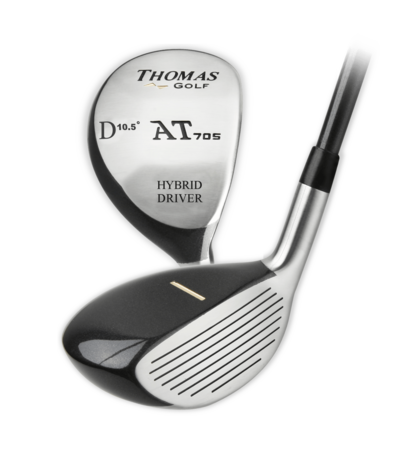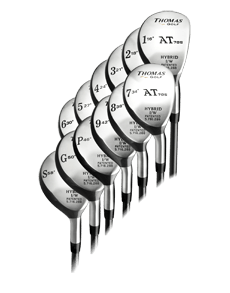Every golfer needs to take the time necessary to pick out the perfect equipment for his or her bag. That includes not only clubs, but also other items like shoes, gloves, and golf balls. When you have the right gear with you on the course, you’ll be making your job as a golfer just a little bit easier. The game is still incredibly difficult, obviously, but using the right equipment is a nice little boost to have – and it may even be an advantage over the competition. In a game this tough, any edge you can find is one worth having.
In this article, we are going to talk specifically about the golf ball piece of the puzzle. And, even more specifically, we are going to be talking about how senior golfers can find the right ball. Golf is an extremely popular game among the retired set for a variety of reasons. It is an enjoyable way to spend time outside, it is a social game, and it provides players an opportunity to get their competitive juices flowing. While many seniors play golf for reasons other than shooting the lowest possible scores, there is nothing wrong with trying to optimize your game in your later years.
Fortunately, golf equipment manufacturers are more than happy to accommodate the needs of the senior player. For this reason, there are many golf balls on the market today which have been designed intentionally to meet the needs of a senior golfer. By taking some time to find the right one of these golf balls for your game, you should be able to improve your overall level of play moving forward.
Along with the right golf ball, senior golfers will also want to take the time needed to find the perfect equipment for the rest of their bag. Using the right club shafts is particularly important, as senior-specific shafts tend to be lighter and feature a softer flex. Of course, not all senior players will need those features, so you’ll want to have your own swing tested to make sure you end up with the right gear. This isn’t about ‘buying a better game’ or anything like that – it is simply about making sure your equipment isn’t getting in the way of your performance on the links.
All of the content below has been written from the perspective of a right-handed golfer. If you happen to play left-handed, please take a moment to reverse the directions as necessary.
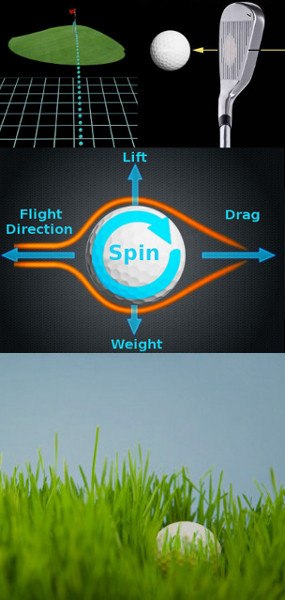
Golf Ball Needs for the Average Senior Golfer
Speaking in generalities is always risky, especially when talking about golf. No two golfers are exactly alike, meaning it is hard to make sweeping statements about categories of golfers in terms of equipment. For example, a club that works beautifully for one golfer may not work at all for another – even if the golfers seem to have a lot in common. This is a complicated game, and trying to gloss over the complications with generalizations is asking for trouble.
With all of that said, there are some characteristics that many senior golfers have in common. Those characteristics are not going to apply to all seniors, of course, but they are a good starting point for shaping the discussion around golf balls. Take a look at the points below to understand what the average senior player will want to look for in a golf ball.
- Easy power. This is the main concern of the typical senior golfer. As we age, most of us lose swing speed along the way. Usually, this won’t be a dramatic, sudden drop – it will just be a few yards at a time as the years go by.
- Knowing that you are likely to lose power in your swing as you age, it makes sense to find a golf ball which can help counteract that loss.
- Typically, that means using a ball with a low compression. A ball with a low compression rating will be easier to compress than a ball with a high rating, and the low compression ball should wind up flying farther in the end. Rather than having to work hard to smash the ball against the face at impact, you will be able to make a comfortable, relaxed swing while letting the ball do some of the work. Simply finding a low compression ball probably won’t let you recapture all of your lost distance, but it can help you extract as much yardage as possible from your current swing.
- Sufficient spin. As you lose swing speed, the average height of your shots is going to tend to come down as well. Hitting lower shots is not all bad, but it does mean that you are going to have trouble stopping the ball a quickly when it lands on the green. This is where backspin comes into the picture.
- By using a ball which offers plenty of backspin on your iron shots, you may be able to bring your approaches to a quick halt, even if they feature a low trajectory. This is a golf ball characteristic which is particularly important for players who live in warm, dry climates. If the golf courses you usually play are firm and fast, you’ll need as much spin as you can find to control your shots effectively.
- Feel around the greens. Most golfers will focus on the performance of a golf ball in the long game when trying to decide which one they are going to use on the course. This is a mistake, however, as it completely ignores half of the shots you are going to hit – those played on and around the greens.
- The short game is easily as important as the long game, and there is an argument to be made that it is even more important. When deciding on the golf ball that you are going to trust, you’ll need to think carefully about how that ball will feel coming off your putter, as well as your wedges. We will talk more about this topic later in the article.
The main consideration for a senior golfer when shopping for a golf ball is finding a model that is going to provide sufficient distance. If you play a ball which is too difficult to compress, you’ll lose yardage and the course will feel even longer. By matching up the characteristics of the ball with the capabilities of your swing, you should be able to arrive at a solution which allows you to play your best.
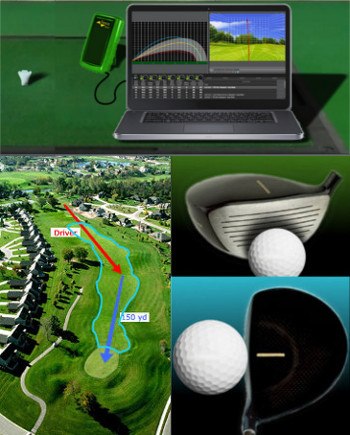
Using Technology
If you are now in the category of ‘senior golfer’, and you have been playing this game for most of your life, you’ve already seen some incredible changes. Woods are now made from metal, golf courses are significantly longer than they were in decades gone by, and greens seem to get faster and faster each year. Along with all of these changes, there is also the profound impact that technology has had on the game. Rather than simply needing to test your equipment on the course in order to find the right clubs or balls, you can now have a computer help you with the process.
Specifically, the piece of technology in question here is a launch monitor. This is a device which is designed to measure just about every single part of your swing. When you hit balls in front of a launch monitor, you will gather more information about your swing than you ever thought possible. In turn, that information can help you make appropriate decisions about the equipment you use on the course. Launch monitors are extremely popular when trying to find a new driver, but they can also be useful when trying to select the right golf ball for your game.
As an amateur player, one of the best things you can do is be willing to listen to the advice offered by your local professional. The pro at your local course should have a wealth of knowledge in the game – far more than the average amateur. If you are willing to listen to the advice offered by the club pro, your game can benefit tremendously in the long run. This is certainly true when it comes to finding the right golf ball. Consider booking a launch monitor session at your local course to have your swing evaluated, and tell the pro you are specifically interested in finding the right ball for your game.
One of the most important pieces of information to come out of the average launch monitor session is simply your swing speed. The speed at which you swing the driver through the impact area is going to tell you a lot about the kind of golf ball you should be playing. Professional golfers on the PGA Tour tend to swing their drivers well in excess of 100 miles per hour, but few seniors are going to be in that territory. More likely, your swing speed will measure somewhere from the 70s to the 90s (MPH). Once you have an exact number in hand as a result of your time in front of the launch monitor, you will be able to use that info to pick out golf balls which are well-suited to your needs.
What Golf Ball Does the Top Senior PGA Pros Use?
The top senior PGA pros use a variety of golf balls, but the most popular brands are Titleist, Callaway, Srixon, and Bridgestone. Here are some of the specific golf balls that are used by the top senior PGA pros in 2023:
- Titleist Pro V1: This is the most popular golf ball on the Senior PGA Tour, and it is used by many of the top players in the world, including Bernhard Langer, Vijay Singh, and Ernie Els. It is a high-performance ball that provides a combination of distance, feel, and control.
- Titleist Pro V1x: This is a firmer version of the Titleist Pro V1, and it is designed for players with a faster swing speed. It provides more spin and distance than the Pro V1, but it also feels a bit firmer.
- Callaway Chrome Soft X: This is a soft, forgiving ball that is designed for players who are looking for a lot of distance and feel. It is not as spinny as some of the other balls on this list, but it is a good choice for players who struggle with control.
- Srixon Z-Star: This is a firmer ball that is designed for players who are looking for a lot of distance and spin. It is not as soft as some of the other balls on this list, but it is a good choice for players who have a fast swing speed.
- Bridgestone Tour B X: This is a firmer ball that is designed for players who are looking for a lot of distance and spin. It is not as soft as some of the other balls on this list, but it is a good choice for players who have a fast swing speed.
It is important to note that not all senior PGA pros use the same golf ball. Some players prefer a lower compression ball, while others prefer a higher compression ball. The best way to find the right golf ball for you is to experiment with different types and brands.
Here are some other golf balls that are popular among senior PGA pros:
- Callaway Chrome Soft: This is a soft, forgiving ball that is designed for players of all skill levels.
- Srixon Z-Star XV: This is a firmer ball that is designed for players with a fast swing speed.
- Bridgestone Tour B RX: This is a ball that is designed to provide a combination of distance and control.
- Vice Pro Plus: This is a premium ball that is made with high-quality materials.

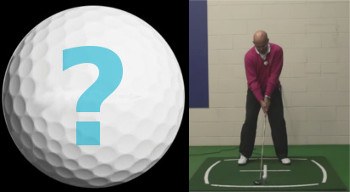 Every golfer needs to take the time necessary to pick out the perfect equipment for his or her bag. That includes not only clubs, but also other items like shoes, gloves, and golf balls. When you have the right gear with you on the course, you’ll be making your job as a golfer just a little bit easier. The game is still incredibly difficult, obviously, but using the right equipment is a nice little boost to have – and it may even be an advantage over the competition. In a game this tough, any edge you can find is one worth having.
Every golfer needs to take the time necessary to pick out the perfect equipment for his or her bag. That includes not only clubs, but also other items like shoes, gloves, and golf balls. When you have the right gear with you on the course, you’ll be making your job as a golfer just a little bit easier. The game is still incredibly difficult, obviously, but using the right equipment is a nice little boost to have – and it may even be an advantage over the competition. In a game this tough, any edge you can find is one worth having.